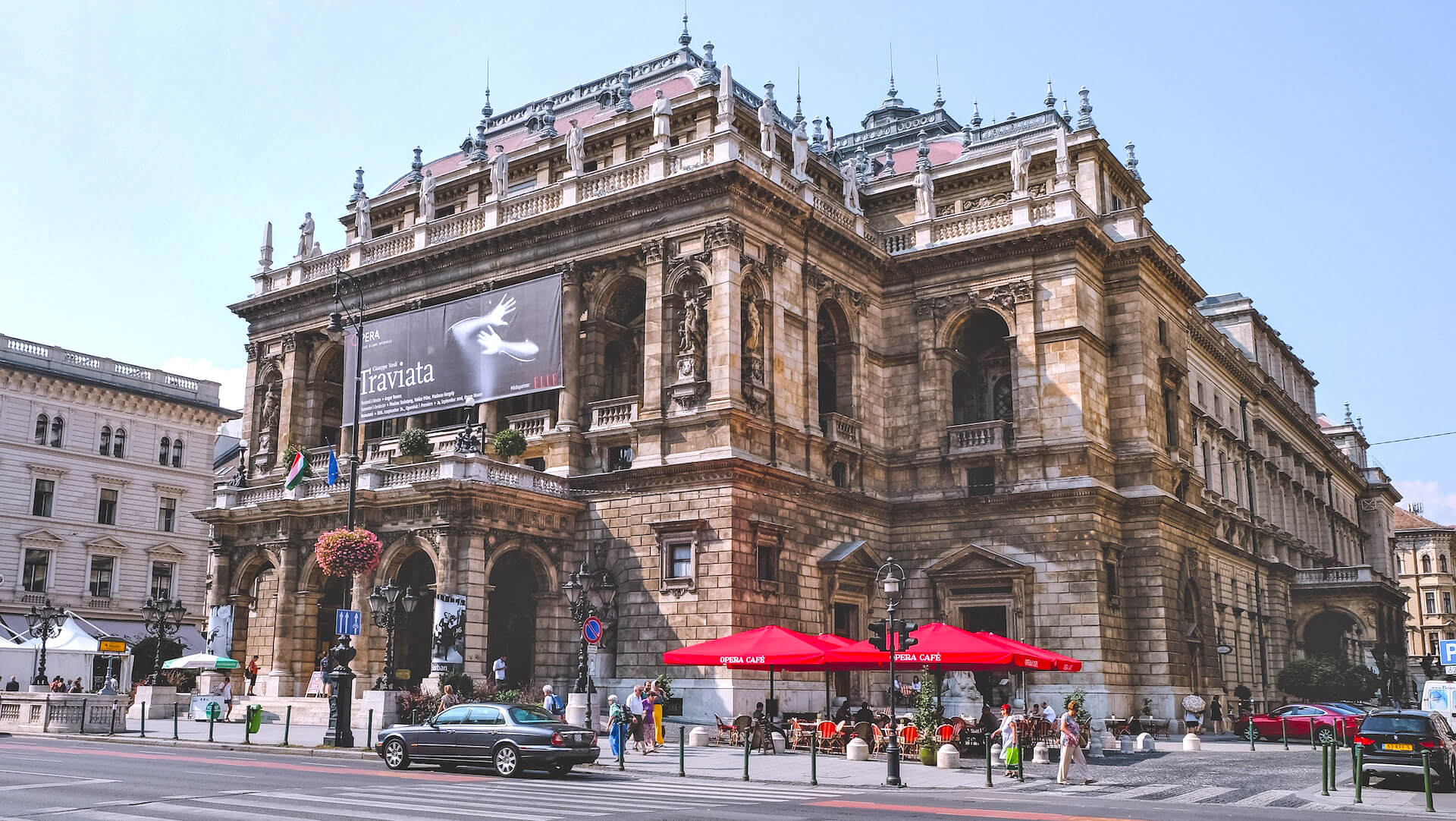The Hungarian State Opera House: A Renaissance Masterpiece in Budapest
The Hungarian State Opera House, known as the Magyar Állami Operahaz in Hungarian, stands as a testament to the rich cultural heritage of Budapest. This neo-Renaissance opera house, located on Andrassy ut, is not only a symbol of Hungarian classical music culture but also one of the most significant listed buildings in the city. With its stunning architecture, historical significance, and world-class performances, the Hungarian State Opera House continues to captivate audiences from around the globe.
- Address: Budapest, Andrássy út 22, 1061 Hungary
- Phone: +36 1 814 7100
- Capacity: 1,300
- Founded: 1884
- St. Stephen’s Basilica (401 m)
- Great Synagogue in Budapest (753 m)
- Rajkó Folk Ensemble (774 m)
- Danube Folk Ensemble (774 m)
- Museum of Ethnography in Budapest (963 m)
A Brief History of the Hungarian State Opera House
The Hungarian State Opera House has a history that spans over 300 years, making it an institution deeply rooted in Hungarian theatrical life. Its origins can be traced back to the early 19th century when touring opera groups performed in the city. However, it was not until 1835, with the arrival of the Kasa National Opera and Theatrical Troupe, that a new era began. These talented artists took over the Castle Theatre and, under the direction of conductor Ferenc Erkel, started giving performances of operas.
By 1837, the troupe had established themselves at the Magyar Szinhaz, which later became known as the Nemzeti Szinhaz or National Theatre. The Hungarian Royal Opera House, as it is currently known, was completed in 1884 and quickly gained a reputation for excellence. With a repertoire of 45 to 50 operas and approximately 130 annual performances, the opera section of the Hungarian State Opera House became a cultural beacon in Budapest.
Architectural Marvels of the Opera House
Designed by the renowned architect Miklos Ybl, the Hungarian State Opera House is a masterpiece of neo-Renaissance architecture. Its exterior facade, adorned with statues of legendary composers such as Mozart, Beethoven, Tchaikovsky, Verdi, and Franz Liszt, immediately captures the attention of passersby. The opulence continues inside, where the interior is richly decorated with wall paintings and sculptures by prominent Hungarian artists, including Karoly Lotz, Bertalan Szekely, and Mor Than.
The grand auditorium, with a seating capacity of 1,260 people, showcases the architectural brilliance of the opera house. The acoustics of the hall are considered outstanding, ranking among the best in the world. This exceptional sound quality, combined with the visually stunning decor, creates an immersive and enchanting experience for every spectator.
World-Class Performances and Renowned Artists
Over the years, the Hungarian State Opera House has hosted a multitude of world-renowned musicians and performers. Gustav Mahler, one of the most influential composers of the late Romantic period, served as the chief band director for four years. Other notable figures who have graced the stage include Otto Klemperer, Janos Ferencsik, Bela Bartok, and Giacomo Puccini, who presented his operas twice at the opera house.
The Hungarian State Opera House Today
Today, the Hungarian State Opera House remains a vibrant cultural institution, attracting both locals and tourists alike. It continues to be a hub for opera enthusiasts, offering a diverse repertoire that spans classical masterpieces, contemporary works, and Hungarian operas. The Opera House is also home to the annual Budapest Opera Ball, a prestigious society event dating back to 1886.
In recent years, the Hungarian State Opera House has undergone renovations to preserve its historical charm and enhance the visitor experience. These renovations have focused on areas such as historical decorations, acoustics, room functions, technical wiring, and stage mechanics. During the renovation period, the opera house temporarily relocated its performances to the Erkel Theatre and Erkel Art Studios.
Exploring Budapest’s Cultural Heritage
Visiting the Hungarian State Opera House is just one of the many ways to immerse yourself in Budapest’s rich cultural heritage. As you wander through the city, take the time to explore other architectural marvels, such as the Vajdahunyad Castle, which showcases a fusion of various architectural styles. Budapest’s Heroes’ Square, located at the end of Andrassy ut, is another must-see destination, where you can encounter iconic figures from Hungarian history.
FAQs
Where is the Hungarian State Opera House located?
The Hungarian State Opera House is located on Andrássy út, a major avenue in Budapest, Hungary.
What kinds of performances are staged at the Hungarian State Opera House?
The Hungarian State Opera House hosts a variety of performances including operas, ballets, and concerts. The repertoire includes classical and contemporary works from Hungarian and international composers and choreographers.
Is there a dress code for attending performances at the Hungarian State Opera House?
While there isn't a strict dress code, attendees are generally expected to dress smartly. For premieres and more formal events, more formal attire is usually expected.
Are there tours available of the Hungarian State Opera House?
Yes, guided tours are typically available and offer an excellent way to explore the grandeur of the building, learn about its history, and gain insight into the performances staged there.
Can I take photographs or videos during performances at the Hungarian State Opera House?
Generally, taking photographs or recording videos during performances is not permitted due to copyright laws and out of respect for the performers and other attendees. However, taking photographs of the building itself is usually allowed.
What languages are operas performed in at the Hungarian State Opera House?
Operas at the Hungarian State Opera House are generally performed in their original language, often with Hungarian and English surtitles.

